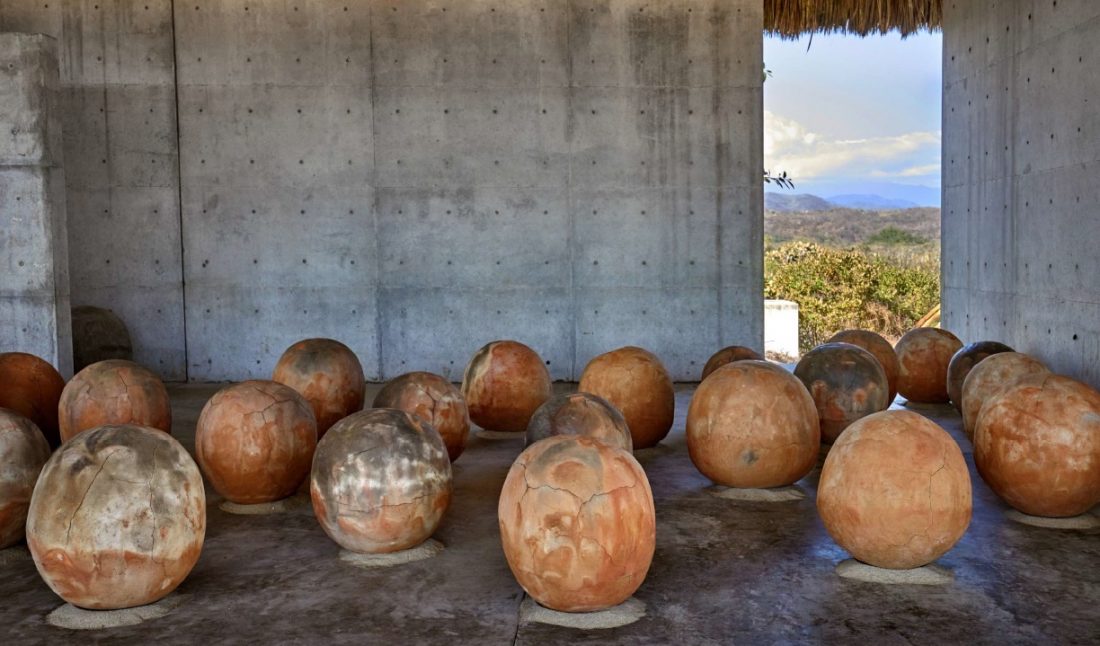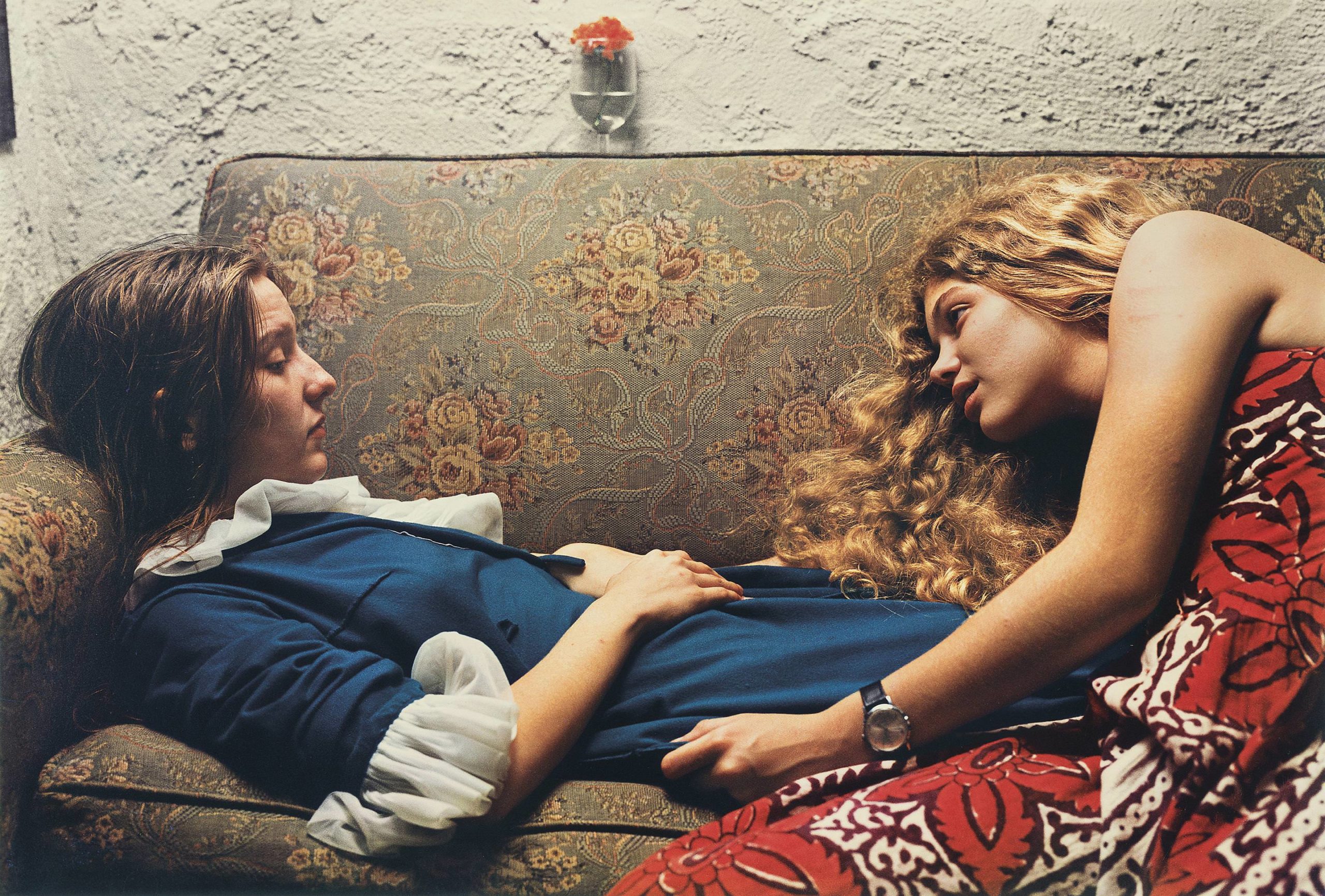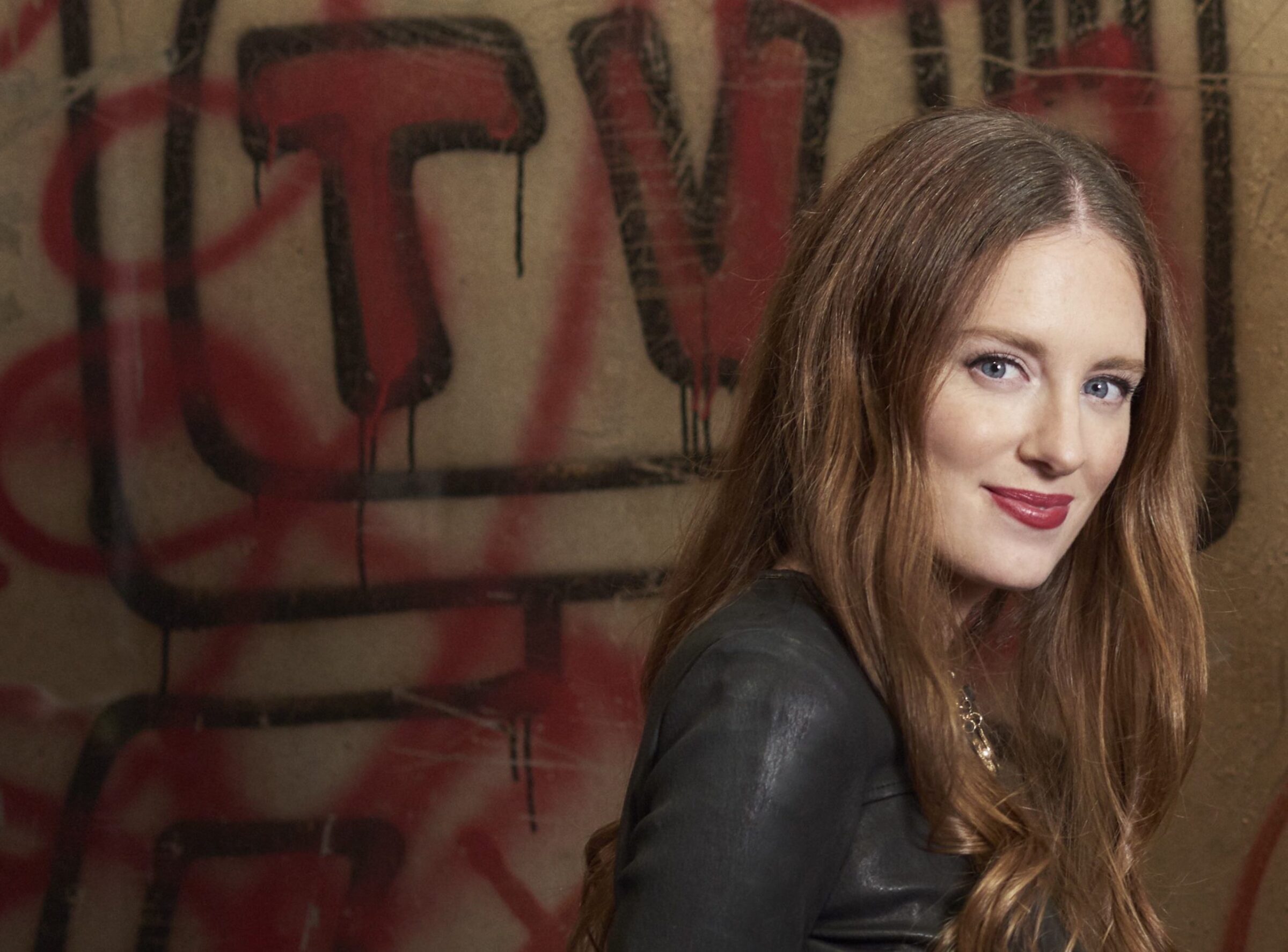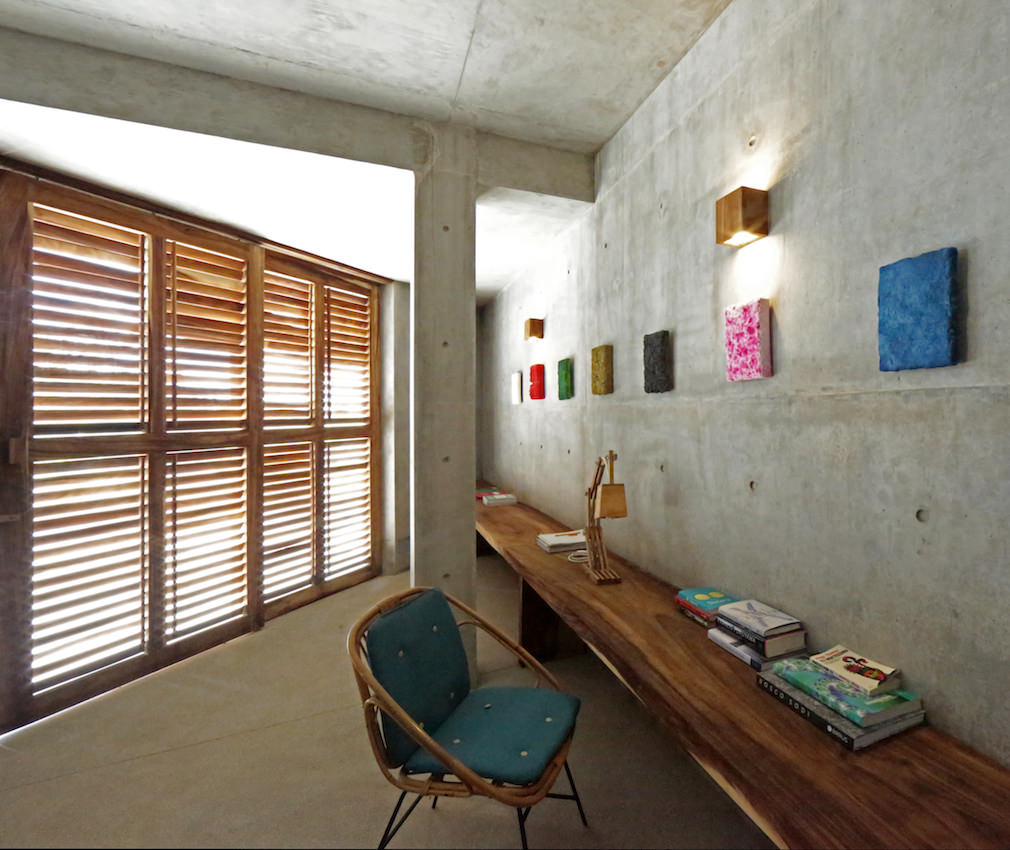Two days ago, the New York-based Mexican artist Bosco Sodi closed his latest public art installation debuted by Pioneer Works. A major site-specific presentation, “Perfect Bodies” provided a slice of Mexico in the Perfect Bodies Auto Collision parking lot two blocks south of the cultural center, anchored by more than 20 large-scale abstract sculptures.
The solid clay spheres were curated by Noguchi Museum’s Dakin Hart and made by Sodi at his home in Oaxaca—cut from the region’s ground, smoothed by hand, and transported by ground with care to highlight our relationship with Earth. From October 11–December 22, 2020, visitors could walk among the spheres, and through January 3 could view them through the parking lot’s fence.
“I believe in the healing power of art,” said Sodi. “To be able to show these works in an open space where people can walk around without any expectations I think is essential.”
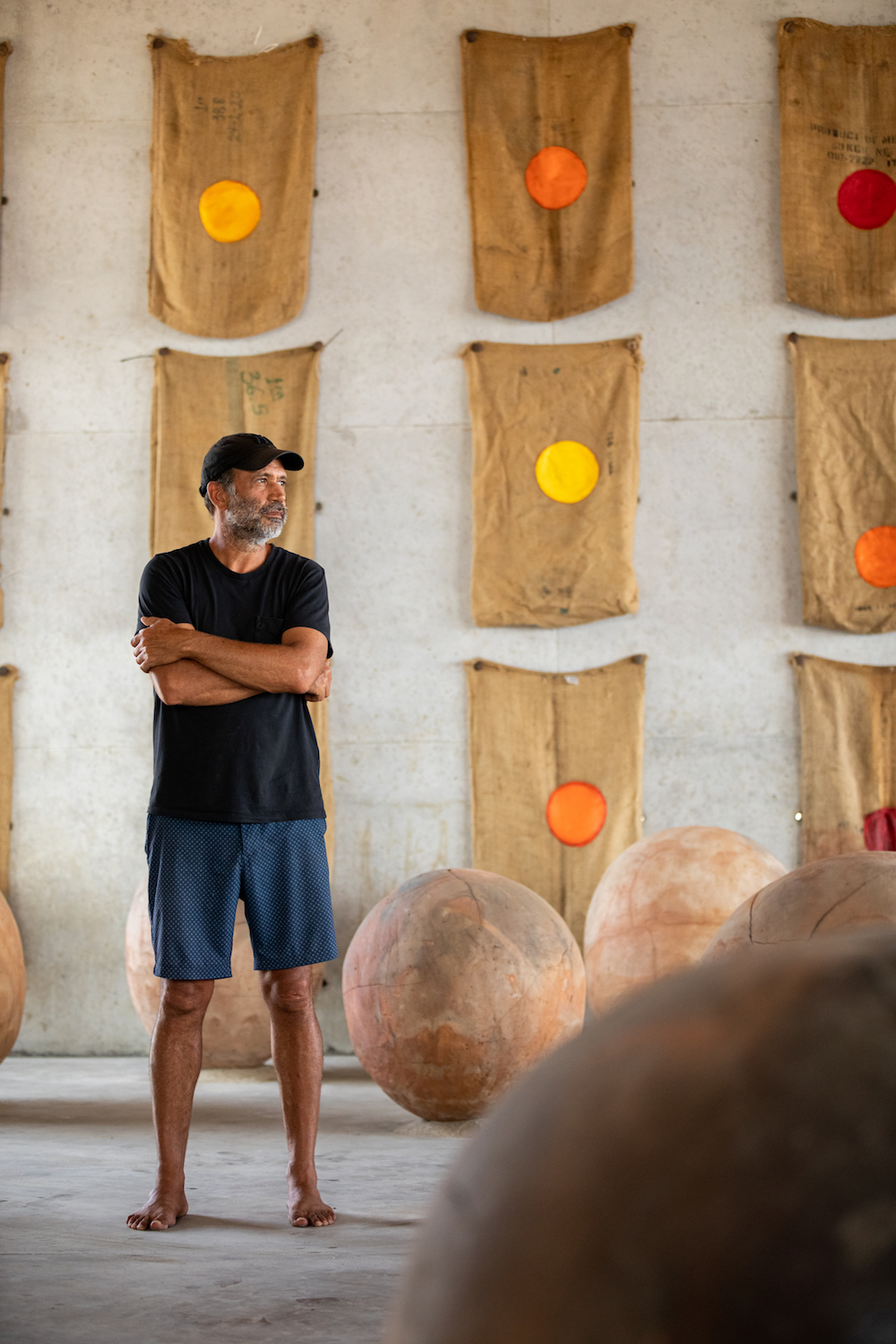 Portrait of Bosco Sodi by Alex Krotkov, courtesy of Studio Bosco Sodi and the photographer.
Portrait of Bosco Sodi by Alex Krotkov, courtesy of Studio Bosco Sodi and the photographer.
For the last decade, Sodi has been living and working in Red Hook (a Brooklyn neighborhood named after the tone of the ground’s natural clay soil), thus the uncanny link between material, place, and emotion is natural. With each sculpture, “Perfect Bodies” continues a dialogue with nature and landscape and Land art, heightened by his personal interests in Japanese aesthetics and Abstract Expressionism.
Sodi spoke with Whitewall about how “Perfect Bodies” triggers contemplation, what his nearby studio is like, and where his works will appear next.
WHITEWALL: How did “Perfect Bodies” come about?
BOSCO SODI: Dakin [Hart] and I have been talking for a long time about exhibiting the clay spheres in a place where they would be completely out of their element. Dakin came up with the idea to do this in a very urban, empty lot in Red Hook, near my home and studio as well as his home. We also thought that it was very good, in these times, to let people to walk freely in an outdoor space and to see an art installation. We wanted to let art do its job, and to make this difficult time more livable.
WW: The 20 new large-scale works were created at your Oaxaca home. How were these created and then transported to Brooklyn?
BS: I have been making these for a long time. All of them are made by hand, and it is a very physical and complex process. They are solid and very heavy (around 800 pounds). It takes a few weeks to create them, then they have to dry—for two months under plastic and in the shadows, then without plastic in the shadows for four months, and then in the sun for another three months. Finally, they are burnt in a rustic kiln for sixteen to twenty hours. We sent them all in a truck, with each in a box.
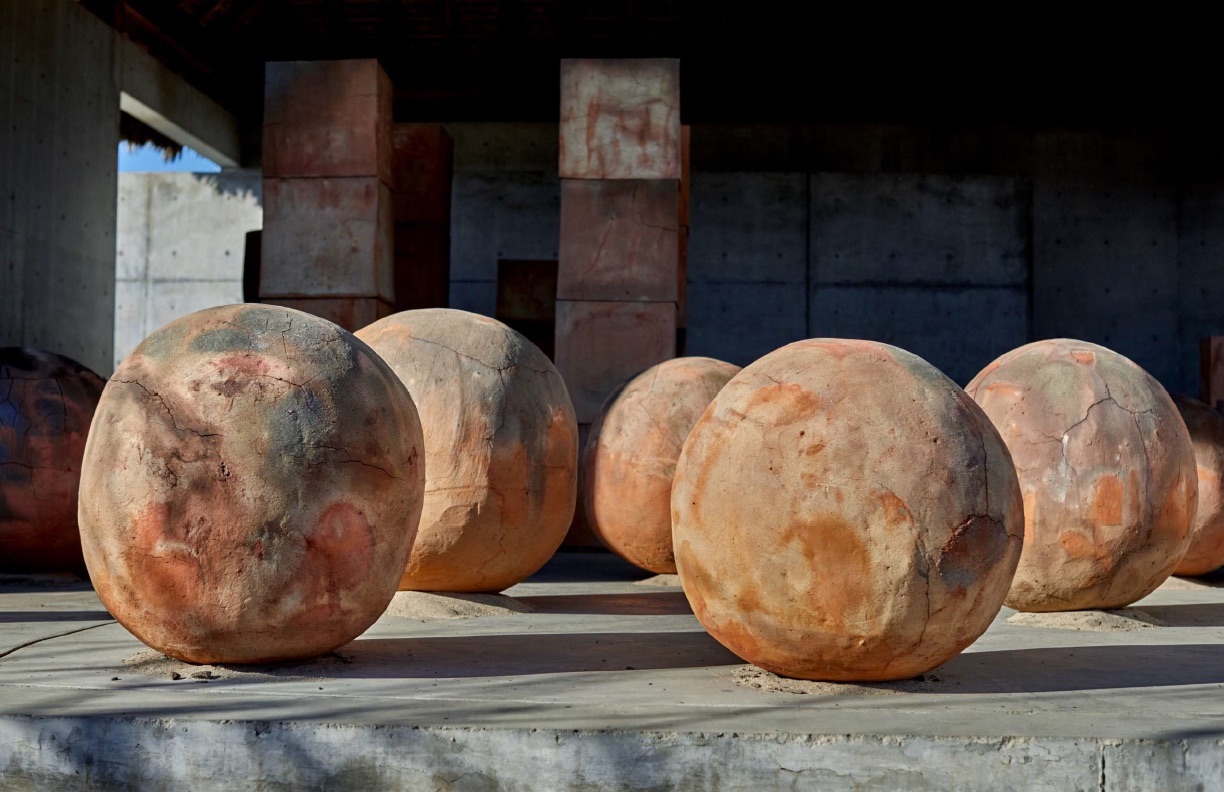 Installation view of sculptures by Bosco Sodi at Casa Wabi, photo by Sergio Lopez Alejandro Jimenez, courtesy of Studio Bosco Sodi.
Installation view of sculptures by Bosco Sodi at Casa Wabi, photo by Sergio Lopez Alejandro Jimenez, courtesy of Studio Bosco Sodi.
WW: The work represents “silence, contemplation, and the passing of time—the small things in life and our relationship with the earth.” Why is this an important sentiment you wanted to share with the world today?
BS: I still believe in the healing power of art. I think that being able to contemplate and to walk around art can help us a lot during challenging times. Art can help us reconnect and center ourselves, if we let it.
WW: The dialogue with nature and landscape is a mix of Arte Povera and Land Art, but is also shaped by your interests in Japanese aesthetics and Abstract Expressionism. What about the latter influences are you inspired by today?
BS: I like to refer to the sculptures as pre-industrial, wabi sabi, minimalist. More than ever, we need art that can help us reconnect with nature, with ourselves, and with the other humans in order to better understand things. I am more influenced now by that type of art.
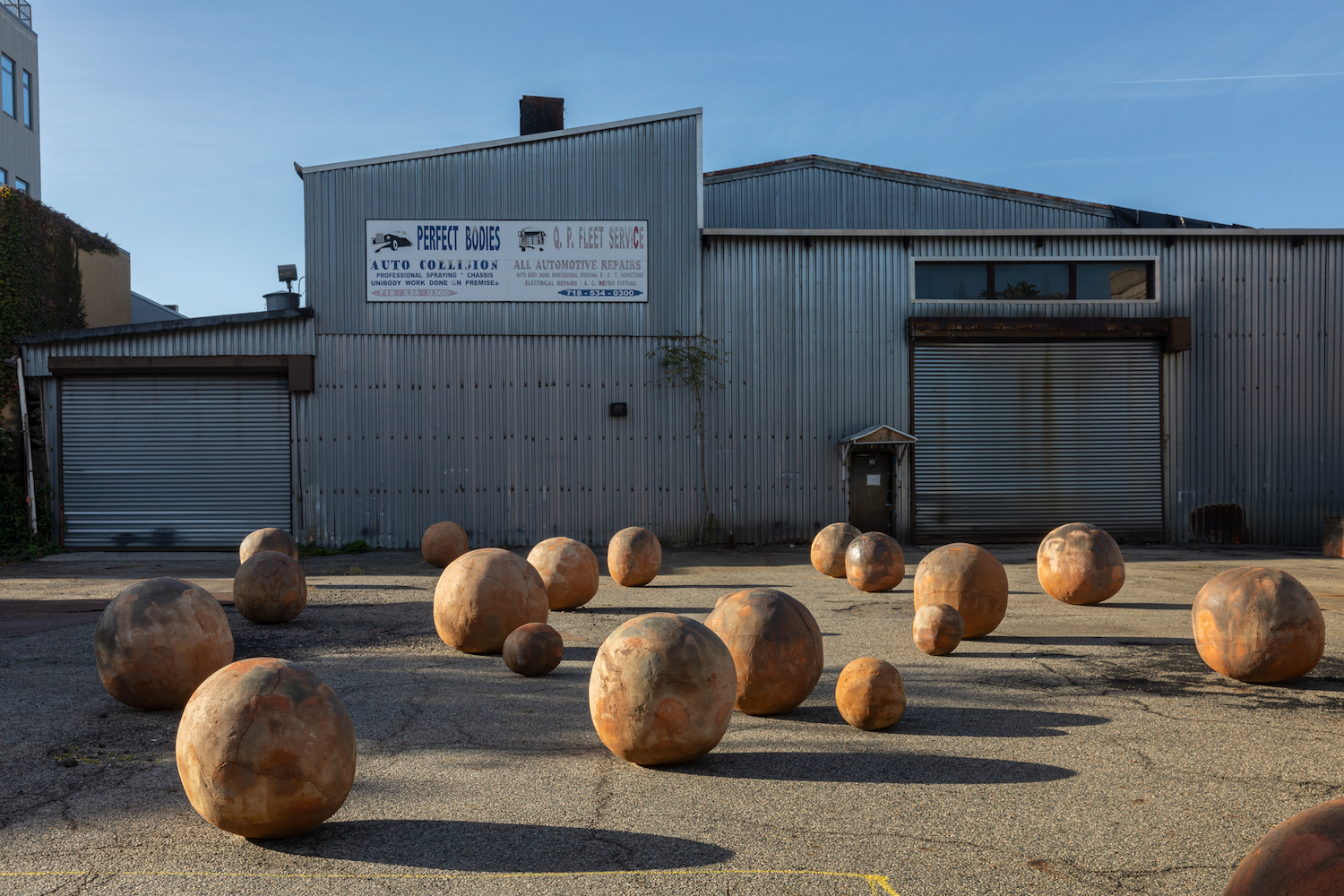 Installation view of “Bosco Sodi: Perfect Bodies” at Perfect Bodies Auto Collision; October 11–December 22, 2020, photo by Christopher Stach, courtesy of Kasmin Gallery.
Installation view of “Bosco Sodi: Perfect Bodies” at Perfect Bodies Auto Collision; October 11–December 22, 2020, photo by Christopher Stach, courtesy of Kasmin Gallery.
WW: You mentioned that you “believe in the healing power of art.” How is art helping you heal today?
BS: In my case, just being able to go to work in the studio, where I make my paintings and sculptures, has been a very good medicine. I don’t know what I would do without this now. But also, I have been able to see other shows and, believe me, they make me feel alive again. It was really special to see an art exhibition again.
WW: “Perfect Bodies” is presented in your studio’s neighborhood—Red Hook, Brooklyn. What’s your studio like? What’s a day there like?
BS: I have a studio near the water, in a pier at the very end of Red Hook. I go very early to the studio every day, and I don’t work with assistants because I like to do everything myself. So normally I arrive, assemble stretchers, stretch the canvas, prepare and mix the materials, and then paint.
Depending on the day, I also work on the paintings that are drying. The studio is walking distance from my home, so normally I have lunch at home before going back to the studio to work. For me, my studio practice is a necessity and my daily therapy.
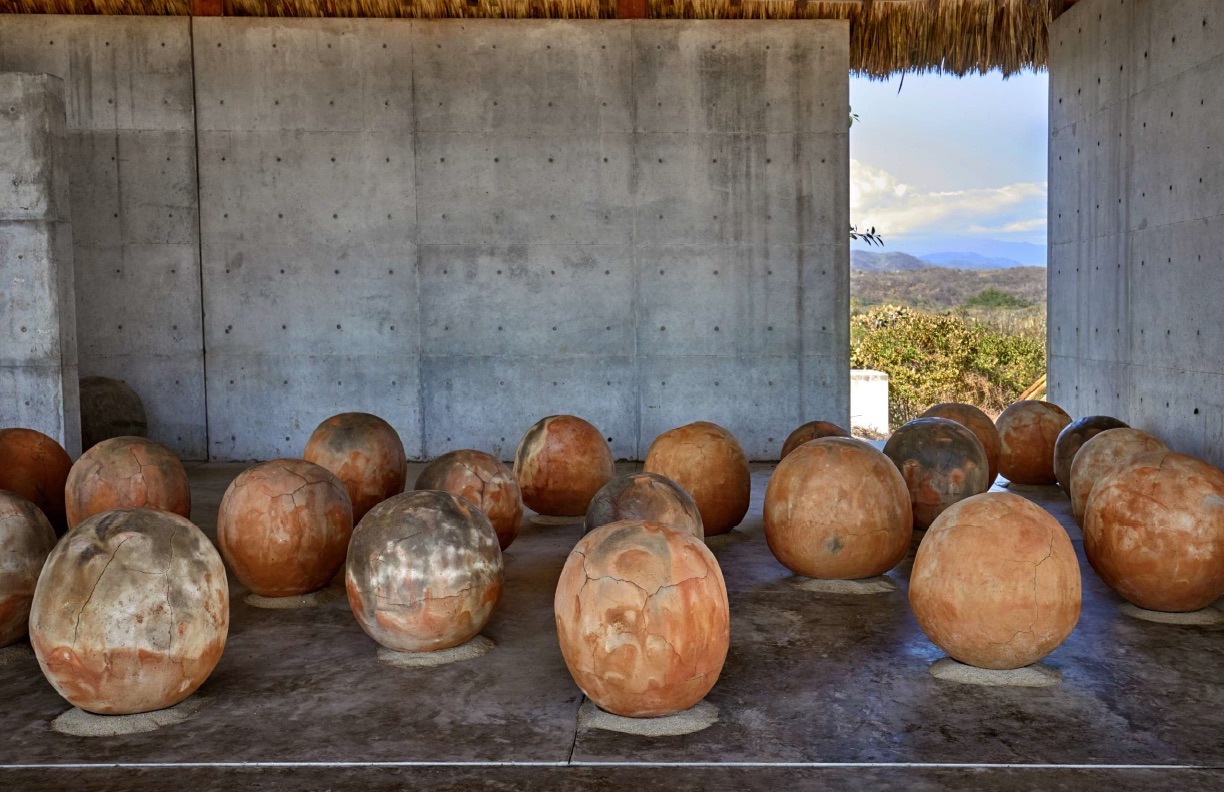 Installation view of sculptures by Bosco Sodi at Casa Wabi, photo by Sergio Lopez Alejandro Jimenez, courtesy of Studio Bosco Sodi.
Installation view of sculptures by Bosco Sodi at Casa Wabi, photo by Sergio Lopez Alejandro Jimenez, courtesy of Studio Bosco Sodi.
WW: What are you working on now/next?
BS: Next year, I’ll be doing a solo exhibition at Koenig Gallery in London, during Frieze in October. I’ll also be doing one at the USF Contemporary Art Museum in Tampa, and—depending on how things are with COVID—another with Luciana Brito Galeria in São Paulo during SP-Arte.






